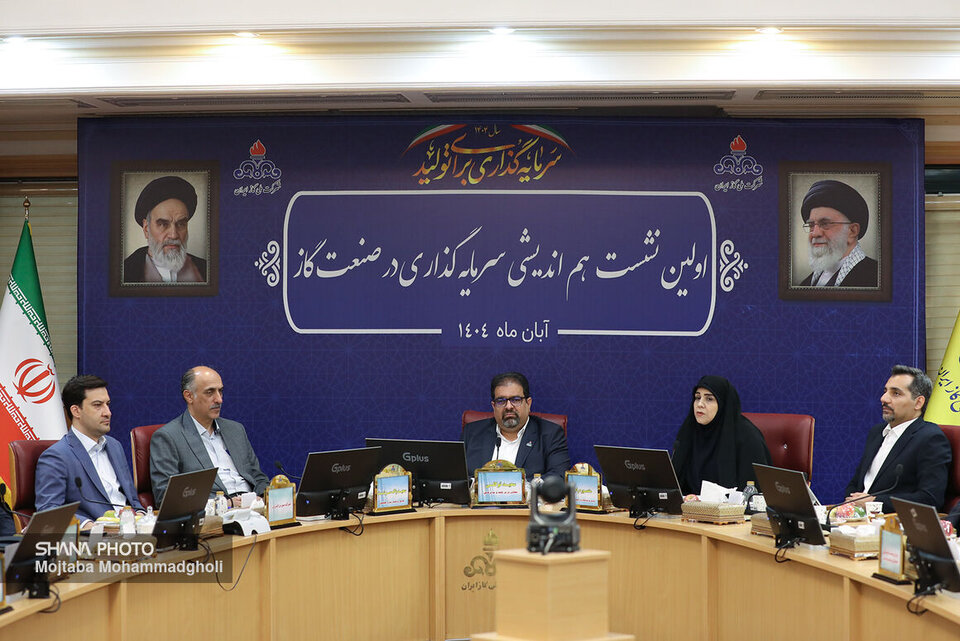“Investment today is no longer a choice—it’s a necessity,” said Saeed Tavakoli, NIGC managing director, during the company’s first investment forum on Saturday. “The only viable path forward is to make full use of the private sector’s capacity and capabilities.”
Tavakoli said the meeting was not merely an opportunity for speeches but the first step toward serious private-sector engagement in the company’s development plans. The NIGC currently operates 351 turbo compressors, 40,260 kilometers of high-pressure pipelines, about 470,000 kilometers of distribution networks, 62 operational units, 20 active refineries, and serves roughly 31 million registered consumers.
According to Tavakoli, an average of 30% to 35% of the country’s gas output is supplied to power plants, 30% to 36% to industrial sectors, 22% to 26% to households, and 4% to 7% to transportation. Despite this distribution, he said, perceptions of gas imbalance persist because domestic thermal power plants consume 80% to 83% of the country’s natural gas—compared with a global average of about 23%. “If efficiency in the power and industrial sectors improves, we can increase the productivity of our gas resources,” he said.
Investment as a Necessity
Tavakoli called for a shift in financing approaches and said the new forum should “light the way for fresh investment opportunities.” He added that NIGC’s newly designed investment packages were based on detailed feasibility studies and risk assessments and were structured to ensure reliable returns. “Our goal is not to transfer all risks to investors,” he said. “We have designed mechanisms for risk sharing and management to foster mutual trust and confidence.”
Reflecting on past challenges in investment projects, Tavakoli noted that some suffered from the absence of clear master plans, contractual frameworks, or experienced investors. “Those lessons are our guideposts for the future,” he said, urging private partners to participate actively in finalizing contract frameworks to make them more precise and effective.
Regional Pilot Projects and Energy Efficiency
Tavakoli praised the active participation of energy investors in the meeting and expressed confidence that such dialogues would yield tangible results. “Every session like this plants the seed of cooperation and growth in the gas sector,” he said.
Highlighting NIGC’s efforts to improve energy efficiency, Tavakoli said the company has signed about 1.73 million contracts to replace low-efficiency heaters with high-efficiency ones this year, with over 300,000 units expected to be installed by year’s end. The project’s capacity could expand to 4.1 million units. In addition, he said, pilot projects for energy service companies (ESCOs) have been launched in seven provinces following cabinet approval earlier this year.
He also underscored the importance of implementing Article 19 of the National Building Regulations, which mandates energy-efficient construction standards. “This measure is vital to achieving 70% to 80% daily energy savings in residential and commercial buildings,” Tavakoli said.
Data-Driven Planning and Consumption Reform
Tavakoli pointed to NIGC’s “Gas Ally” cultural education program, which trained 200,000 sixth-grade students last year in partnership with the Ministry of Education. That number is expected to rise to 1 million this year. The program, he said, has significantly improved public awareness about safe and efficient gas use nationwide.
Discussing the government’s revised gas tariff plan—approved by the Cabinet and developed with the Planning and Budget Organization and the Oil Ministry’s Planning Department—Tavakoli said the structure has been simplified from 12 tiers to 4, while the number of climate zones has increased from 5 to more than 1,300. The goal, he said, is to align tariffs more closely with local climate conditions. Under the new plan, 88% of consumers who remain within consumption norms will see little to no change in their bills.
Over the past five years, NIGC has analyzed more than 1.5 billion consumption data points to identify abnormal usage patterns, including cases where residential connections were used for commercial purposes. “This large-scale data analysis forms the backbone of our ongoing tariff reform and future energy management programs,” Tavakoli said.
He concluded by emphasizing the need for interagency cooperation. “If today we plant the seeds of energy optimization, they will only grow into sustainable results through collective effort,” he said. “There is no alternative to the precise implementation of these programs if we want to improve national energy consumption patterns.”


Your Comment